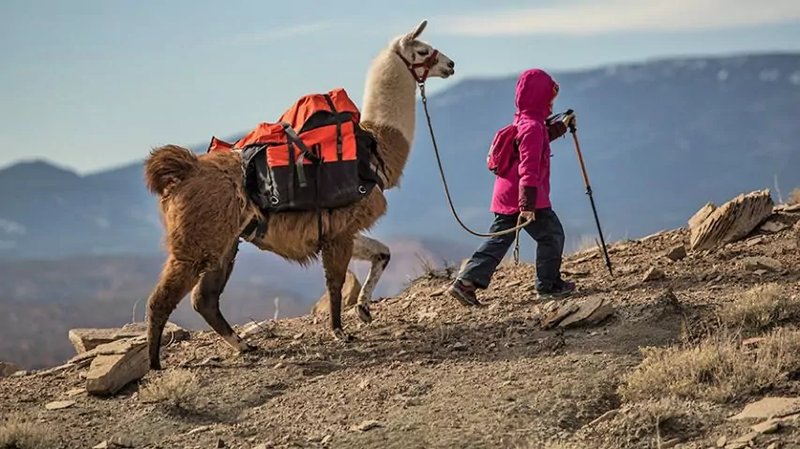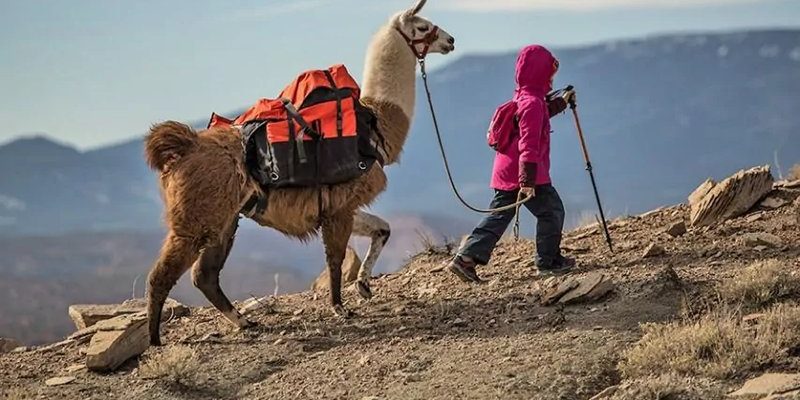
But bringing llamas into your hiking plans isn’t as simple as just letting them roam along with you. It involves some training and the right equipment to ensure a smooth journey for both you and your furry friend. Imagine preparing for a trip where your llama is not just along for the ride but is fully equipped to handle the journey with ease. Let me break down the essential aspects of using llamas for hiking and trekking, including training and the gear you’ll need.
Why Choose Llamas for Hiking?
You might be wondering why llamas are such a popular choice for outdoor adventures. One big reason is their gentle nature. Unlike some other pack animals, llamas are calm and friendly, making them perfect companions for both seasoned hikers and newbies. They’re also sturdy and can carry quite a bit of weight, which is a huge plus when you’re hauling camping gear or supplies.
Plus, let’s not forget their curiosity! Llamas enjoy exploring new environments, and their playful spirit can turn a regular hike into a memorable experience. Imagine hiking along a beautiful trail with a llama intermittently stopping to sniff the flowers or check out a new sound in the bushes. It adds a unique touch to your adventure!
Another reason to consider llamas is their low environmental impact. They have soft, padded feet that are less damaging to trails compared to other animals like horses. This makes them a more sustainable choice for nature lovers who want to minimize their footprint while enjoying the great outdoors.
Training Your Llama for Trekking
Training your llama is an important step before you hit the trails. This process can be broken down into a few simple steps. First, you’ll want to build trust. Spend time with your llama in a controlled environment, allowing them to get comfortable with you. You can do this by offering treats and speaking softly—think of it as the llama version of bonding over coffee.
Next, introduce your llama to basic commands. Just like you’d teach a dog to sit, you can teach a llama to respond to cues such as “stop,” “go,” and “whoa.” Using treats as rewards can make this process fun for both of you! Consistency is key here; practice regularly to reinforce learning.
Once your llama is responding well to commands, it’s time to get them used to wearing a pack. Start with a light load to help them adjust. As they get comfortable, gradually increase the weight. Aim for about 25-30% of their body weight to avoid strain. Remember, just like us, llamas need to build up their stamina over time!
Essential Equipment for Llama Hiking
When it comes to hiking with llamas, having the right equipment is crucial. Here’s a list of essentials you’ll want to pack:
- Backpack/Saddle: Make sure it’s comfortable and properly fitted for your llama. Look for one with adjustable straps.
- Lead Rope: A sturdy lead rope allows you to guide your llama. A longer rope can give them more freedom to explore while still being under control.
- Halter: Choose a well-fitted halter to keep your llama secure. It should be snug but not too tight.
- First Aid Kit: Just like you would for yourself, having a basic first aid kit for your llama is smart. Include bandages, antiseptic, and anything else you might need in case of minor injuries.
- Water Bowls and Food: Always carry enough water for both you and your llama. Pack some hay or pellets for snacks along the way.
Investing in quality gear not only ensures safety but also enhances the overall experience for both you and your llama. You want to be comfortable so you can focus on enjoying the journey!
Common Challenges and Solutions
Every adventure comes with its own set of challenges, and hiking with llamas is no exception. One common issue is getting your llama to cooperate during the hike. If your llama seems reluctant or refuses to move, it could be tired or uncomfortable. Always check their pack to ensure it’s not too heavy and that they’re not overheated.
Another challenge might be encounters with other animals or hikers. Llamas can be curious but also a bit skittish. When you approach busy trails, keep your llama close and calm. Consider using calming techniques, such as speaking softly or giving treats to keep their spirits up.
You might also face weather-related issues, like sudden rain or intense heat. Be prepared with a weather-appropriate tarp or cover for your gear and ensure your llama has plenty of water and shade.
Benefits of Trekking with Llamas
Trekking with llamas offers unique benefits that go beyond the obvious. For one, they can carry up to 80 pounds of gear comfortably. This means you don’t have to bear the full weight of your equipment, allowing you to enjoy the journey more.
Also, llamas can navigate rugged terrain quite well. Their agility and balance make them great trail companions even on uneven paths. You’ll find that they help you maintain a steadier pace since they move at a comfortable speed. It’s like having a reliable hiking partner that leads the way!
Lastly, hiking with llamas can be a wonderful way to connect with nature. As they interact with their surroundings, you’ll find yourself noticing details you might typically overlook. Their natural curiosity can ignite a sense of wonder and adventure in you as well.
Using llamas for hiking or trekking can truly transform your outdoor adventures. From their gentle demeanor to their ability to carry weight, these animals can become valuable partners in exploring nature. With the right training and equipment, you’ll create memorable experiences filled with laughter, exploration, and connection—not only with your llama but with the trails you traverse.
So, if you’re ready to add a fun twist to your hiking trips, consider bringing a llama along. Trust me, it’s an experience like no other! You’ll find that the journey is not just about reaching a destination; it’s about sharing the adventure with a trusted companion who makes every step enjoyable.

